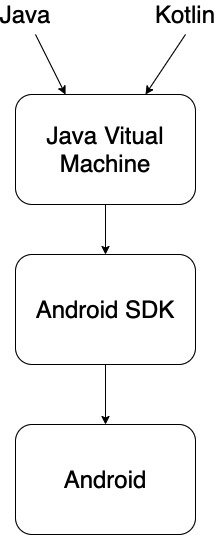Mobile application development continues to grow today. This is due to the widespread adoption of powerful and convenient mobile phones and tablets. In addition, the evolution of the mobile application development industry is facilitated by the rapid growth of the speed and quality of Internet coverage.
Nowadays, you can find a whole range of basic programs for solving a very wide range of tasks: from reading and writing an email, staying in touch through several kinds of messengers, staying up to date with calendars, editing and posting photos, getting around with cartographic systems, and much more.
With the presence of sensors and devices in mobile devices, the contributions to the development of mobile applications are significant. These sensors and devices include high-quality cameras, accurate GPS for geolocation, sensors of acceleration, and temperature, etc. Separately, it’s important to highlight the use of special processors in mobile systems for artificial intelligence algorithms. Every year, the communication characteristics are improving in terms of speed and a decrease in the power for signal transmission, as was done for Bluetooth Low Energy (BLE).
One of the biggest markets for mobile applications is Android from Google. The two most heavily used programming languages for native applications are Java and Kotlin.
In this post, we focus on the advantages of writing applications in both Java and Kotlin for Android applications.
Java in Android Application development
Java was created by James Gosling and released by Sun in 1995. By using Java, we can create programs that are compatible with almost all types of machines where a Java virtual machine can run.
In 2009, Oracle acquired Sun Microsystems and became the sole provider of Java. In the official implementation, Java programs are compiled into bytecode, which is interpreted by a virtual machine for a specific platform.
The language has borrowed a lot of syntax from C and C++. In particular, the C++ object model is taken as a basis, but it is modified. The possibility of some conflict situations that may have arisen due to programmer errors has been eliminated and the process of developing object-oriented programs has been facilitated. A number of actions that programmers must perform in C / C++ are assigned to a virtual machine, such as freeing memory.
The Java community today is one of the largest and most influential developer communities in the world. It can be used in almost any field of software development.
Java has the following properties (when compared to Kotlin):
- Platform-independent.
- Allows you to write object-oriented programs.
- It is used for both the development of a client part and on a backend.
- Handles security.
- Highly productive, dynamic, and well-maintained.
You can now use Java to develop enterprise applications, including backend and mobile clients on Android. There are many libraries available for Java with many ready-made modules. In addition, Android Studio supports auto-substitution and many other useful features for developing Java code.
These are the advantages of Java that Kotlin does not have:
- Verified exceptions with multi-catch.
- Primitive types, which are not classes.
- Static members.
- Non-private fields.
- Wildcards (masks, wildcards).
- Ternary Operators.
Java is still intensively used for creating mobile applications for Android. It is perfect for large scale mobile applications and for legacy code in existing applications. Java can be used together with Kotlin or as a stand-alone programming language.
The need for creating the Kotlin programming language
Significant innovations to create a better and easier tool for coding mobile applications in Java could not be quickly implemented. This was due to the large share of Java in the programming of general systems, backend, desktop applications, and so on, where changes in programming approaches and the addition of syntactic "sugar” for coding were not as urgent in the development of mobile applications.
It became necessary to find a programming language that would remove some of Java's shortcomings and would allow programmers to write more concise and efficient source code that would be compiled into JVM bytecode.
Kotlin is a statically typed, object-oriented programming language that runs on top of the Java Virtual Machine and is developed by JetBrains.
Also, it compiles JavaScript and executable code for many platforms. The authors aimed to create a language that was more concise and type-safe than Java.
The language is fully compatible with Java, which allows Java developers to switch to this language seamlessly.

Kotlin has been in development since 2010 and was presented to the public in July 2011. In February 2016, the 1.0 release was made available.
In May 2017, Google announced that Kotlin language tools based on the JetBrains IDE would be included as standard in Android Studio 3.0, the official Android development tool.
At Google I/O 2019, it was announced that the Kotlin programming language would become a priority in Android development.
Kotlin in Android Application development
The Kotlin language syntax uses elements from Pascal, TypeScript, PL/SQL, Go and Scala, C++, Java, C#. When declaring variables and parameters, data types are specified after the name (separator - colon). The semicolon as a statement separator is also optional (as in Scala and Groovy). In most cases, a newline is enough to tell the compiler that the expression has ended.
Besides the object-oriented approach, Kotlin also supports a procedural style using functions. As in C and C++, the entry point to the program is the main function, which takes an array of command-line parameters.
Kotlin programs also support Perl and shell-style string interpolation (variables included in a string are replaced with their content).
Koltin solves a number of problems that Java suffers from:
- References to null are controlled by a system of types.
- There are no raw types.
- Arrays in Kotlin are invariant.
- Kotlin has the correct functional types and supports their use instead of SAM types from Java.
- Variability at the place of use without wildcards (or masks, original: wildcards).
- There are no verifiable exceptions in Kotlin.
These are the advantages of Kotlin that are missing in Java:
- Lambda Expressions + Inline Functions = Performance and Controlled Custom Structures.
- Null safety.
- Smart casts.
- String templates.
- Properties.
- Primary constructor.
- First-class delegation.
- Type inference for variables and properties.
- Singletons at the language level.
- Declaration-level variability and type projection.
- Intervals.
- Operator overloading.
- Auxiliary objects.
- Data classes.
- Separate interfaces for mutable and immutable collections.
One of the most useful elements for developers is that the reference to the user interface objects of Android can now be done much more concisely than when compared to Java. In the same task, the Kotlin class is about 40% shorter compared to Java.
Kotlin cuts the boilerplate using findViewByIds. Kotlin Android Extensions allow you to import a link to a View into Activity. This makes development more comfortable and you can write code faster without losing quality.
Android KTX
Android KTX is a set of Kotlin extensions that are included with the Android Jetpack.
These extensions leverage several Kotlin language features, including:
- Extension functions.
- Extension properties.
- Lambdas.
- Named parameters.
- Parameter default values.
- Coroutines.
To use Android KTX, it is necessary to add the following dependency to the project's build.gradle file:
repositories {
google()
}Android KTX is organized into modules, where each module contains one or more packages.
Android KTX contains a single core module that provides Kotlin extensions for common framework APIs and several domain-specific extensions.
This is a list of the packages that are contained in the Android X:
| androidx.core.animation androidx.core.content androidx.core.content.res androidx.core.database androidx.core.database.sqlite androidx.core.graphics androidx.core.graphics.drawable | androidx.core.location androidx.core.net androidx.core.os androidx.core.text androidx.core.transition androidx.core.util androidx.core.view androidx.core.widget |
There are a lot of helpful modules in Android KTX. You can find more information here.
Conclusion
From project experience, we can say that the main advantages of Kotlin are:
- Due to the syntax, the amount of code is reduced many times, with the same functionality.
- Greater null safety for applications. In Java, very few people use the Null / NonNull annotations.
- Data classes that reduce the amount of code for data models. No need to add that the IDE is still generated.
- New mechanisms for working with multitasking simplify writing code to perform difficult tasks.
- Delegates, extensions, type aliases, and other pleasant syntax sugar.
Kotlin doesn’t come without its drawbacks. Many people do not understand that under the hood of the boilers, the same Java rules apply. Therefore, a more superficial approach is being developed, which can lead to simple mistakes, because when working with Kotlin on Android, you also need to understand how it will work under the hood.
Our Svitla Systems experts specialize in creating applications for mobile platforms and the different existing methods. We develop complex and efficient mobile applications for Android, both in Java and Kotlin.
Whether you want to develop a Kotlin application from scratch or continue the ongoing development of a Java application, we have you covered. Our engineers, test team, and UI/UX specialists create high-quality applications regardless of the development language.





